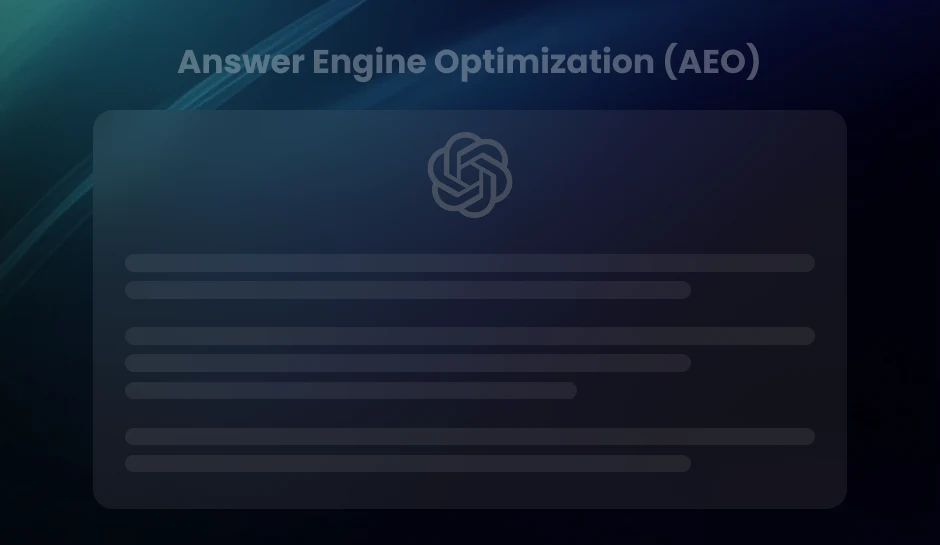
Consumer Data Enrichment: Transforming Raw Data into Precision Marketing Fuel
Raw data is just the starting point, on its own, it tells only part of the story. Consumer data enrichment layers in demographic details, behavioral trends, purchase intent, and third-party intelligence to build a full picture of each customer. With these enriched insights, marketers can segment audiences more effectively, deliver hyper-personalized messages, and launch campaigns that convert at a significantly higher rate. It's the difference between guesswork and precision in today’s data-driven marketing landscape
Consumer data enrichment refers to the process of augmenting raw customer data with additional layers of information, including demographics, online behavior, purchase history, location, and other relevant details. This refined synthesis empowers businesses to paint a clearer, real-time picture of their audience.
Modern businesses operate in a landscape saturated with fragmented, unstructured data. Alone, a name, email address, or an isolated transaction tells a narrow story. Enriched data turns isolated fragments into dynamic customer profiles. These profiles reveal deeper preferences, behavioral triggers, and predictive patterns.
Brands that transform raw inputs into actionable insights consistently outperform their competitors in terms of relevance, timing, and engagement. The result: data-driven decisions that bolster acquisition strategies, optimize customer journeys, and increase lifetime value. Consumer data enrichment doesn’t just fine-tune targeting- it completely redefines how marketing strategies are built and scaled.
What Is Consumer Data Enrichment?
Turning Incomplete Records into Insightful Consumer Profiles
Consumer data enrichment is the process of appending, correcting, and enhancing existing customer data with additional attributes drawn from various external and internal sources. Instead of relying solely on basic entries like name, email, or address, enriched data builds a detailed profile that captures nuances in behavior, preferences, and intent.
Raw Data vs. Enriched Data: What’s the Difference?
Raw consumer data is typically limited to first-party inputs- what users provide when they sign up, make a purchase, or contact a support team. It often includes
- Full name
- Email address
- Phone number
- Billing or shipping address
Enriched consumer data goes further. It combines existing fields with attributes sourced through third-party providers, transaction records, social media signals, and behavioral analytics. The result is multi-dimensional insight, ready to power more precise decision-making across marketing, sales, and support touchpoints.
The Purpose: Turning Contact Records into Valuable Consumer Intelligence
The aim of consumer data enrichment is not simply to have more data- it’s to have more useful data. By integrating meaningful attributes, businesses can transition from generic outreach to intelligent engagement. Enrichment creates a dynamic customer profile that evolves in response to changes in consumer behavior, interests, or lifecycle stage.
Building the Backbone: Components of a Strong Customer Data Foundation
Data Accuracy and Quality Set the Tone
Misleading, incomplete, or duplicated data leads directly to flawed assumptions. High-quality consumer data requires consistency, completeness, and correctness at every level. According to Experian’s 2023 Global Data Management Research, 91% of organizations report that poor data quality negatively affects operational efficiency, and 77% acknowledge that it also impacts customer trust. The foundation begins here; accurate data drives meaningful enrichment.
The Cost of Inaccurate Audience Segmentation
Mistargeted campaigns bleed money. If your segments are based on outdated addresses, merged profiles, or false demographic tags, your personalization strategy will implode. A misclassified customer doesn’t just ignore marketing; they begin to distrust the brand. Clean segmentation depends on up-to-date datasets and precise user identification.
Reliable Insights Require Solid Input
Every data-driven decision, from product recommendations to churn prediction, hinges on trust in the underlying data. Garbage in leads to garbage out; statistical algorithms can’t compensate for flawed inputs. Behavioral patterns only emerge clearly when enrichment layers sit on top of verified consumer details.
Identity Resolution Powers Consistency Across Channels
Without resolving user identities, businesses interact with fragmented shadows. Identity resolution connects multiple identifiers, such as email addresses, device IDs, phone numbers, and social handles, to build a comprehensive, person-level view. This process bridges online behavior, in-store activity, and customer support interactions into a coherent whole.
Cross-Platform Matching Aligns Disparate Data
CRMs, eCommerce platforms, support ticket systems, and analytics tools all tag consumers differently. Matching customer info across these sources removes redundancy and surfaces patterns that no single platform can reveal. With a centralized linkage system, the marketing team doesn’t guess which profile belongs to whom.
Unified Customer IDs Enable Seamless Targeting
When different internal systems speak the same language, through a universal customer ID, coordination improves immediately. Campaign automation, lifecycle tracking, and audience analysis all rely on this key. Omnichannel delivery becomes a reality when all touchpoints are tied back to a definitive customer identity.
Customer 360: The Operational Baseline
Before any enrichment begins, organizations need a comprehensive 360-degree customer profile that encompasses demographics, transactions, interactions, and preferences. Only then can machine learning models effectively detect anomalies, allowing marketers to tailor their offerings to meet consumer needs. A 360-degree view of a customer is not a final product; it’s a launchpad for accurate interpretation.
Destroying Data Silos Opens the Full Picture
Silos block visibility across departments. Sales doesn’t see support tickets; product teams miss behavioral signals; marketing lacks purchase insights. Consolidating these fragmented datasets yields a single, unified source of truth. Data enrichment multiplies in value once the full context surrounds each customer’s profile.
- Accurate base data reduces enrichment costs and errors.
- Linked identities ensure customer journeys remain trackable.
- Unified IDs power true personalization and cross-channel coordination.
- Consolidated systems extend insight-driven decision-making across the enterprise.
Pro Tip- Before investing in data enrichment tools or services, conduct a thorough audit of your existing data infrastructure. Prioritize cleansing and standardizing your core customer data—because the effectiveness of any enrichment effort depends entirely on the quality and integrity of the foundation it’s built on.
How Data Enrichment Enhances Customer Segmentation
Aligning Data Enrichment with Customer Segmentation Strategies
Segmentation improves significantly when enriched data serves as the foundation. Static data, such as name, email, and location, offers a narrow view. Layering enriched attributes, including lifestyle insights, purchase behavior, and social media activity, produces segment definitions that mirror real-world behaviors and preferences.
Data enrichment does more than add volume; it injects relevance. When aligned with segmentation strategies, enriched profiles enable marketers and data teams to group customers not only by who they are, but also by what they do, what they need, and when they’re likely to act. This shift from static identifiers to dynamic indicators enables sharper, outcome-driven segmentation models.
Refining Audience Groups with Enriched Attributes
Consumer enrichment introduces high-resolution variables. These may include:
- Psychographics: opinions, values, interests, and lifestyle segments.
- Behavioral signals: recency, frequency, monetary data (RFM), and content engagement levels.
- Purchase intent and channel preferences: web activity, clickstream data, and response history.
With these attributes in play, marketers can shift from broad labels like “female, 25-34” to more meaningful clusters, such as “eco-conscious millennial buyers who engage with video content and convert on mobile.” Each enriched group reflects specific patterns that are hard to approximate with raw customer records alone.
Benefits: Personalized Messaging and Optimized Campaigns
Personalization begins with knowing who you’re talking to. Enriched segments fuel content strategies designed for resonance. Messaging tailored to specific needs or mindsets, for example, sending sustainability-focused messaging to consumers with a high affinity for ethical brands, delivers measurable shifts in engagement and ROI.
Campaign performance follows suit. More accurate targeting results in less waste and higher yields. According to a 2023 Salesforce marketing report, companies that apply enriched segmentation in campaign planning experience a 36% average increase in customer engagement and a 28% rise in conversion rates compared to standard demographic targeting. Enrichment doesn’t just change what you send- it changes who responds.
Segmentation by Behavior, Intent, and Demographic Enrichment
The strength of consumer segmentation lies not in the number of segments but in their precision. Enriched data allows segmentation based on:
- Behavior: navigation paths, content interactions, purchase cycles.
- Intent: inferred purchase readiness based on search patterns or cart activity.
- Demographics Enrichment: combining age, ZIP code, and income with lifestyle and digital behavior.
This multidimensional approach supports use cases beyond marketing, for instance, product development teams identifying underserved customer needs, or customer success units predicting churn within specific behavioral cohorts.
Pro Tip-To unlock the full value of enriched segmentation, build feedback loops between your campaign outcomes and your enrichment logic. Analyze which enriched attributes consistently correlate with high-performing segments, then double down on those signals in future segmentation models.
Exploring Personalization at Scale with Enriched Customer Data
Data Enrichment as a Driver for Personalized Marketing
Enriched consumer data transforms static records into living customer profiles. Behavioral signals, purchase patterns, demographic traits, and psychographic markers come together to inform highly individualized outreach strategies. When CRMs integrate enriched attributes such as lifestyle preferences, brand affinities, or life stage triggers, marketing platforms can deliver content that mirrors real customer interests with pinpoint accuracy.
Automated systems fueled by enriched data adjust messaging and timing without manual intervention. Customer journeys cease to be linear and shift into responsive sequences, reacting to real-time changes in consumer behavior. This is how brands shift from batch-and-blast campaigns to precision-based interactions.
Use Cases: Dynamic Email Personalization, Tailored Web Experiences, Smarter Advertising
Dynamic Email Personalization: Platforms like Salesforce Marketing Cloud and Braze ingest enriched attributes to customize subject lines, product recommendations, and content layout. A consumer previously identified as a frequent traveler receives flight deals and travel gear content, while another with recent home improvement activity sees tools or décor suggestions. Personalized fields draw from location, transaction history, and inferred preferences.
Tailored Web Experiences: Enriched data enables intelligent page rendering using platforms like Adobe Experience Manager and Dynamic Yield. The same homepage displays wellness products to a health-conscious visitor, parenting resources to a family-oriented segment, or electronics to a tech enthusiast. Browsing behavior, referrer source, and third-party lifestyle data determine the experience served.
Smarter Advertising: Data enriched with attributes such as income band, household composition, or vehicle ownership enriches programmatic bidding models. DSPs, such as The Trade Desk or Google DV360, ingest this data to optimize creative selection, messaging cadence, and channel preferences. Campaigns bypass broad demographics and target real-world buyer intent with nuanced messaging, resulting in a substantial increase in return on ad spend (ROAS).
Enhancing Customer Lifecycle Marketing Through Enriched Insight
Enrichment sustains engagement across all lifecycle stages, not just acquisition. Predictive enrichment models, informed by churn signals and past customer trajectories, guide decisions on win-back timing or upsell readiness. A churn-prone user browsing competitor products triggers loyalty incentives. A long-term subscriber who shows signs of dissatisfaction, based on sentiment signals, receives priority engagement from customer success teams.
Loyalty programs, reactivation workflows, and upgrade offers gain relevance when they leverage real-time indicators, usage patterns, lifestyle milestones, and service frequency, which have only acquired value through enrichment. Brands operating across multiple channels unify this intelligence to ensure consistency at every touchpoint, from SMS to in-stream video to in-app messaging.
Using Third-Party Data to Support Contextual Relevance
Integrating third-party enrichment layers, such as credit scoring, interest graphs, and social media activity, adds contextual precision to every interaction. A financial services app adjusting loan offers based on career seniority and spending behavior. A music subscription tailors discovery playlists based on mood inferred from time of day and regional events. Context isn’t guessed- it’s backed by aggregated, enriched signals from trusted providers such as Oracle Data Cloud, Experian, or Lotame.
These third-party datasets integrate with CDPs to bridge the gap between internal data blind spots and external consumer behavior, enabling campaigns that respond to evolving context. Serving a winter jacket ad based on zip-code weather data isn’t innovation’s table stakes. Pushing a product launch aligned with a consumer’s career change, likely relocation, or recent child’s birth? That’s personalization at scale, made possible through strategic data enrichment.
Pro Tip- To scale personalization without overwhelming internal teams, prioritize data orchestration. Integrate your enrichment data into a central hub like a CDP and build modular personalization rules. This allows marketing teams to launch context-aware campaigns across channels with minimal rework, maximizing the ROI of enriched data while keeping operations lean.
Driving Value Through Third-Party Data and Behavioral Analytics
Internal vs. External Data Sources: A Strategic Contrast
First-party data originates directly from consumer interactions within owned channels, such as website visits, app usage, purchases, customer service logs, and emails. This information provides the backbone of customer profiles but can be limited in scope. To build out a richer, more dimensional understanding, businesses turn to external data sources.
External data, particularly from third-party providers and behavioral analytics platforms, supplies fresh context. It identifies attributes and behaviors that extend beyond what a brand can observe within its internal ecosystem. The integration of both internal transactional history and external behavioral signals establishes a dynamic feedback loop that enhances the accuracy of decision-making.
Third-Party Data Integration: Expanding the Consumer Lens
Third-party enriched data delivers demographic, psychographic, and firmographic details that help close visibility gaps. This isn’t about volume. It’s about accuracy, breadth, and actionable dimensions.
Leading enrichment providers offer datasets that include:
- Financial insights: Credit standing, purchase power indexes, and income brackets – these indicators fuel more precise offers, loan estimations, and eligibility assessments.
- Social media activity and profiles: Publicly available interests, affinities, and audience clusters reveal affinities that content management systems can act upon in real-time.
- Household and lifestyle data: Ownership status, number of dependents, vehicle data, and even energy consumption patterns sharpen segmentation models.
When combined with internal data, these attributes paint a comprehensive profile, more akin to a living hologram of consumer behavior.
Behavioral Analytics: Reading the Digital Body Language
Behavioral data translates actions into signals. Every product view, abandoned cart, scroll pause, or app gesture tells a story. Unlike static demographic data, behavioral inputs continuously evolve, reflecting intent as it forms.
Integrated behavioral analytics solutions capture:
- Session duration, click patterns, and interaction depth
- Channel preferences and content dwell times
- Browsing velocity and pathing sequences within digital experiences
Behavior reveals intent. For instance, a user who repeatedly visits mortgage calculator tools is already signaling high-intent financial planning behavior, even if they haven’t initiated a formal inquiry.
Operationalizing Behavioral Signals in Real Time
Layering behavioral analytics with third-party enrichment allows organizations to pivot experiences on demand. Suppose a customer lands on a product page, adds an item to their wishlist, then abandons their session. Enriched data may indicate that this individual belongs to a high-income urban demographic with seasonal purchasing patterns. Behavioral intelligence detects urgency in repeated sessions. Together, these inputs can trigger personalized pricing strategies, dynamic product recommendations, or follow-up messages with higher conversion probability.
Pro Tip- Maximize the ROI of third-party data and behavioral analytics by setting up trigger-based automation. Utilize a combination of enriched attributes and live behavioral cues to drive real-time responses, such as surfacing dynamic offers, retargeting with urgency-based messaging, or dynamically adjusting content modules mid-session.
Real-Time Data Processing and Enrichment: Turning Moments into Market Opportunities
The Competitive Advantage of Real-Time Enrichment in Digital Channels
Customers make split-second decisions, and brands that respond in real-time meet them where it matters during those decision points. Real-time consumer data enrichment drives relevance at the pace of user behavior. Whether triggered by a product search, an abandoned cart, or an app click, enriched data integrated on the fly fuels context-aware experiences across channels.
In digital marketing environments, milliseconds matter. Enriching a customer profile as a session unfolds lets marketers shift from static segmentation to dynamic engagement. Personalization engines, recommendation algorithms, and retargeting logic perform at a significantly higher level when supplied with enriched behavioral data in the moment, not after the fact.
How Streaming Data Pipelines Enable Instantaneous Enrichment
Companies achieve real-time enrichment by deploying streaming data architectures built on Kafka, Apache Flink, or AWS Kinesis. These systems ingest event-level data, clicks, location updates, and transactions and join them against customer profiles within milliseconds. Data is not stored and then processed; instead, it is processed in-stream, feeding downstream personalization engines, CRM platforms, and analytics dashboards without latency.
When enriched data from third-party APIs, such as Clearbit or FullContact, combines with internally generated engagement data, platforms continuously update customer profiles. This enables second-by-second decision-making, rather than batch updates that can delay relevance by hours or days.
Sharper Customer Insights Through Enrichment
When demographic, psychographic, and transactional data converge, insight quality improves dramatically. This multidimensional view dismantles silos and reveals hidden patterns; customer personas evolve from hypothetical archetypes to measurable segments prioritized for ROI. For instance, using purchase intent and behavioral signals alongside firmographic data enables B2B marketers to identify accounts most likely to convert in Q2, rather than in the distant future.
Monetizing the Audience and Justifying Campaign Spend
Companies leveraging enriched data monetize their audiences more effectively. Expanded profile depth enables higher-value ad placements, better partner alignment, and superior lookalike modeling. According to a Nielsen report, campaigns utilizing enriched data achieve a 2.9 times higher ROI compared to those employing basic demographic targeting. Budget allocation guided by enriched intelligence yields higher returns per dollar spent, particularly in performance-intensive verticals such as e-commerce, streaming, and financial services.
Success Indicators: Churn Reduction and Revenue Expansion
- Churn reduction:
- Upsell and cross-sell:
Telcos and subscription businesses identify precursors to customer cancellations using enriched usage and support data. Predictive modeling powered by real-time enrichment can reduce churn rates by 10% to 15%.
Retailers find that enriched purchase history, payment preferences, and browsing behavior directly support 20% to 40% increases in upsell success rates. The same data refines timing and messaging for add-on offers.
Corporate performance dashboards incorporating these enrichment-driven metrics shift C-suite narratives from “how many emails were opened?” to “how much revenue did this insight generate?” That’s the difference proactive data enrichment makes inside results-driven organizations.
Transforming Insight into Action: Operationalizing Consumer Data Enrichment
Combining multiple data layers, from firmographics and behavioral signals to psychographic tendencies, produces more than just an enhanced profile. It drives campaigns rooted in precision, CX strategies tailored to individual needs, and dynamic product offerings that evolve in real-time. The result? Better accuracy in decision-making, deeper consumer understanding, and consistently personalized experiences at scale.
Leaders don’t treat enrichment as a one-off project. They systematize it. Customer environments evolve. Data sources change formats, IDs decay, behaviors shift. Teams that embed enrichment into their data operations- refreshing inputs, refining models, revalidating assumptions- stay ahead of these shifts. Consumer data enrichment becomes a feedback loop that sharpens itself over time.
Want to shift from raw data to revenue-driving intelligence? Start by evaluating your customer data maturity. Ask which attributes are missing. Audit activation points: Where is personalization falling flat? Map those insights to enrichment capabilities-third-party signals, real-time triggers, and AI-powered identity resolution engines. This exercise identifies precise gaps and the right enrichment partners to close them.
Key Takeaways
- Consumer data enrichment transforms incomplete records into multidimensional customer profiles, enabling businesses to transition from generic messaging to hyper-personalized engagement that drives higher ROI, enhances customer experiences, and fosters stronger brand loyalty.
- A reliable, 360-degree customer profile—built on accurate, deduplicated, and identity-resolved data—is essential. Enrichment multiplies in value only when based on clean, consolidated datasets that integrate seamlessly across systems and channels.
- Streaming data pipelines and behavioral analytics enable businesses to enrich customer profiles in real-time. This real-time intelligence fuels adaptive experiences, such as dynamic ads, personalized product recommendations, and in-app content, giving brands a competitive edge.
- From increasing customer lifetime value and conversion rates to reducing churn and improving campaign efficiency, data enrichment delivers quantifiable business results. Organizations using enriched insights consistently outperform those relying on basic or siloed data.
Turn static insights into active levers. Enrichment doesn’t just describe your consumer.
It predicts, influences, and accelerates the next touchpoint. Start now-your competitive edge depends on it. Email us at info@diggrowth.com and we’ll get back to you.
Ready to get started?
Increase your marketing ROI by 30% with custom dashboards & reports that present a clear picture of marketing effectiveness
Start Free Trial
Experience Premium Marketing Analytics At Budget-Friendly Pricing.

Learn how you can accurately measure return on marketing investment.
Additional Resources
Don’t Let AI Break Your Brand: What Every CMO Should Know
AI isn’t just another marketing tool. It’s changing...
Read full post postFrom Demos to Deployment: Why MCP Is the Foundation of Agentic AI
A quiet revolution is unfolding in AI. And...
Read full post postAnswer Engine Optimization (AEO): The New Frontier of SEO in 2025
As digital experiences continue to evolve, so does...
Read full post postFAQ's
Consumer data enrichment is the process of enhancing basic customer data (like names or email addresses) with additional insights such as demographics, online behavior, purchase history, and lifestyle attributes. It transforms raw, isolated data into complete, dynamic customer profiles. This enables more accurate segmentation, better personalization, and data-driven decision-making across marketing and sales functions.
Enriched data allows marketers to understand not just who a customer is, but how they behave, what they prefer, and when they’re most likely to engage. This leads to hyper-targeted campaigns, improved timing, higher conversion rates, and ultimately better ROI. According to industry reports, enriched segmentation can boost engagement by up to 36% and conversions by 28%.
Not always, but third-party data significantly expands the depth and accuracy of consumer profiles. It fills in blind spots left by internal (first-party) data. Trusted sources, such as Experian, Clearbit, or Oracle, provide demographic, financial, or behavioral insights that are difficult to capture internally, thereby enhancing personalization and predictive analytics.
Low-quality or outdated enrichment data can lead to mistargeted campaigns, decreased customer trust, wasted budget, and flawed business decisions. Inaccurate segmentation can misrepresent customer needs and reduce engagement. That’s why it’s critical to prioritize data accuracy, validation, and consistent identity resolution across platforms before and during the enrichment process.
During the data enrichment process, a wide range of attributes can be added to enhance customer profiles. These often include demographic data such as age, gender, income level, and household size, which help define the basic identity of a consumer. Behavioral signals like website activity, content engagement, and app usage offer insights into how a consumer interacts with a brand. Lifestyle indicators—such as hobbies, travel habits, and health interests—add contextual depth, while professional information like job title, industry, and company size is particularly useful in B2B contexts.
 Rahul Sachdeva
Rahul Sachdeva  Arpit Srivastava
Arpit Srivastava 

